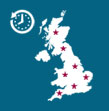The star system
The Michelin guides use the following definitions for starred restaurants:

One star - Very good cooking in its category

Two stars - Excellent cooking, worth a detour

Three stars - Exceptional cuisine, worthy of a special journey
There are some other categories and symbols used, such as bib gourmand (introduced in 1997), which denotes “good cooking at moderate prices”. The allocation of stars is done annually by Michelin, based on anonymous visits by their inspectors. The precise definition of what is looked for in a restaurant in order to gain a star is a closely guarded secret of Michelin. However it has become a highly coveted accolade, partly due to its perceived integrity – unlike many guides, Michelin takes no advertising no hidden fees.
Frequently asked questions
Michelin is notoriously secretive about its restaurant guide, so inevitably many questions either remain unanswered or are their answers remain somewhat speculative.
Q – How often are restaurants re-inspected?
Michelin does not reveal this. According to some former inspectors who have written exposés, it may have been, at least at certain times, less than annually. However there are certainly cases, such as when a restaurant is being considered for a star or a promotion, where there will be several visits by different inspectors in the same year.
Q – Does Michelin cover every country?
No, indeed until the 2006 New York Guide, Michelin only covered Europe. In 2012 Michelin had country guides covering Germany, Switzerland, Benelux, Italy, Spain and Portugal, the UK and Ireland and France. Additionally there were guides to New York, San Francisco, Chicago, as well as Hong Kong & Macau. Michelin’s coverage in Japan by 2012 had stretched to Tokyo, Yokohama, Kamakura, Kyoto, Osaka, Kobe and Nara, with Hokkaido covered in a brand new guide in April 2012. Other European countries get partial coverage through the Main Cities of Europe guide.
Q – When are Michelin Guides published?
The first guide these days is usually the New York Guide, which is published around the beginning of October. France was traditionally the last guide published around the end of February each year, to be followed by the Main Cities of Europe guide about a month later, but the first Hokkaido guide in 2012 appeared in late April. Are Michelin stars the same standard the world over? In theory they should be, but this is highly debatable; certainly my own experience suggests that there is significant variation, particularly when comparing stars in Europe with some of the newer guides, such as the Hong Kong guide.
Q – Does decor count towards a star?
There have been many rumours about the need for smart linen and expensive crockery to gain a Michelin star, but the evidence, at least in recent years, would say no. Sushi Saito, for example, serves food at a wooden counter within a multi-storey car park, yet has received three stars.
Q – What is an “espoir”?
Michelin introduced the notion of an espoir or “rising star” in 2005 in some but not all of their guides, to denote a particularly good restaurant in its category, with an implication that it is at least being considered for promotion. It emerged in a rare interview with a Michelin inspector that a restaurant could only keep this status for two years, and there was certainly no guarantee that an espoir would actually get promoted. The espoir has not really caught on and is not used in all the Michelin country guides; indeed it appeared to have been dropped in the UK guide in 2012.
Q – What were the three star places long ago?
The 1931 edition brought the return of the three-star rating system, with seven restaurants achieved this rating: la Mère Brazier on the Col de la Luère, la Côte d'Or in Saulieu (Dumaine), l’Auberge du père Bise in Talloires (Marius and Marguerite Bise), la Pyramide in Vienne (Point), le Café de Paris, la Tour d'Argent (Terrail) and Lapérouse (Topolinski) in Paris.


